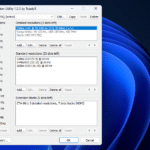The custom NVIDIA DLSS 4 “High Performance” mode strikes a good balance between the Performance and Ultra Performance modes, delivering image quality on par with the latter with better performance.
A comparison video shared by MxBenchmarkPC shows games like Cyberpunk 2077, Oblivion Remastered, STALKER 2, The Witcher 3 next-gen and Kingdom Come Deliverance 2 running on an RTX 4070 at 1080p with the official NVIDIA DLSS 4 Performance and Ultra Performance mode and the “High Performance” mode which can be enabled in the NVIDIA App by setting the Ovrerride Super Resolution to 42% input resolution. The custom mode essentially delivers the same image quality as the vanilla Performance mode but with better performance in most of the tested games, and with noticeably better image quality in some games like The Witcher 3 next-gen over Ultra Performance mode.
With the release of the NVIDIA App earlier this year, it has become possible to tweak NVIDIA DLSS 4 Super Resolution with different input resolutions, giving users more control over how the upscaler behaves. Besides the “High Performance” mode showcased in the video below, the App also allows users to use the Ultra Quality mode that was added to the upscaler a while back but has never been properly implemented, allowing users to enjoy better performance than DLAA with a negligible impact on image quality.
NVIDIA DLSS 4 officially launched together with the RTX 50 series GPUs, introducing a new Transformer model that delivers better image quality than the old CNN model, Multi Frame Generation for the latest RTX GPU generation and more. More information on these new features can be found here.










